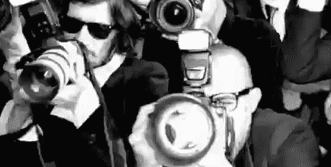How Workplace Robots Will Really Test Your Management Skills

Driving your cars, buying and selling company shares and even selling you coffee, robots are expected to become a major part of the global workforce, with some experts suggesting they will take most white collar jobs within the next 30 years
Jermaine HaughtonThe robots currently used by the majority of UK businesses are typically software or hardware which can automate routine service tasks to greater efficiency than human staff, transferring and organising data from multiple input sources to internal recording systems.
These systems are generally one-of-a-kind prototypes programmed for limited functions such as processing parking tickets, loan applications in banking and claims handling for insurers.
These forms of automation are effective in conducting the specific tasks they were programmed for, but lack free-thinking intelligence and independence.
Some scientists, however, believe that in the coming generation this is set to change with continued development of ‘smart’ technology and the Internet of Things (IoT). Much of the potential for a new wave of robots has come from advancements in so-called machine learning, the software that bestows robots with contextual intelligence.
The unprecedented explosion of data from the combinatorial effects of advances in cloud computing, big data, the Internet of Things, mobile connectivity and social media demands automation to help organisations cope.
Within the next decade, the World Economic Forum has stated that, as many as five million ‘human’ jobs will be performed by robots – a number that will only increase over time. And the predicted rise in artificial intelligence (AI) and robotics in the workplace seems to have the backing of most UK managers.
In last year’s survey by Expert Market, 70% of UK senior managers said they would consider using a robot on their team and almost half would not feel bad about replacing a human job with a robot.
The respondents felt AI would be more suited to performing roles such as administration and answering the telephone, rather than holding advanced positions such as chief executive.
Some 52% said they would use robots to do the jobs of office managers, 44% said robots could do IT work and 28% said finance was suitable for increased use of AI.
The studies surrounding the inevitable use of AI in the workplace have understandably heightened fears over the likelihood of millions of blue and white collar Brits losing their jobs, and facing long term unemployment.
“Technology is going to get to the point where it’s going to take over a lot of the routine, predictable-type jobs in the economy,” said Martin Ford, author of The Rise of the Robots: Technology and the Threat of a Jobless Future.
Ford, and others, argue that the combination of robots and artificial intelligence represents a different kind of revolution–one that could eventually come for white collar professions. “That’s a lot of jobs [at stake],” he said.
Managerial Considerations
Regardless of the type of job an individual has, AI is set to have a significant effect, even if it doesn’t lead to redundancies.
Some jobs may be lost, but some UK-based academic futurist experts argue others will be substantially augmented, to enhance job roles and efficiency, thereby helping companies secure their most important asset – their people.
Comparisons have been drawn to PCs, which initially caused consternation but ultimately boosted productivity as well as economic and job growth.
The biggest challenge managers will face is merging human and automated roles and responsibilities effectively, and providing human employees with opportunities to apply their own natural skills.
In many cases, a rethink of the way your business operates, the culture and values it upholds and its financial resources will have to be taken into heavy consideration on how the introduction of robots can help grow your company.
For one, there are some things that automation just cannot do, for example, medical management, underwriting and case reviews, as well as speaking or comprehending colloquial slang.
By comparison, humans are very good at assessing situations, or the 'art' of the job, and essentially asking: “what is the right thing to do in a given situation?”.
Therefore, customer-facing jobs are likely to remain in the human realm, as face-to-face customer interactions are still crucial in delivering good customer service. Therefore, a blended model of automation working in tandem with people can provide complementary outcomes.
Secondly, managers may want to create more robot-specific jobs for their human employees to monitor the efficiency and effectiveness of the ‘bot,’ as well as complement the work robots do, like what software designers, web programmers and copywriters do with computers and the internet.
Roles like ‘augmented reality designers,’ ‘avatar programmers’ and 'fusionists' who combine art, engineering, research and science, are just a few examples of new jobs that could be created through increased use of AI.
British authors Richard and Daniel Susskind state that middle managers are starting to recognise that they, too, need to change.
Some will be able to step up but most will have to develop specialist skills, be they creative or technical, that machines cannot yet master.
Senior executives, meanwhile, may find themselves co-ordinating a network of such people, many of them independent contractors. Within the wider context of workplace digitisation, the changing of traditional working structures could require softer interpersonal or social skills for managers to determine how effectively clusters of workers can collaborate in a virtual network or maintain team cohesion when people are not all working out of the same office.

Press & Media Enquiries
For more information or to request interviews, contact CMI's Press Team on 020 7421 2705 or email press.office@managers.org.uk


